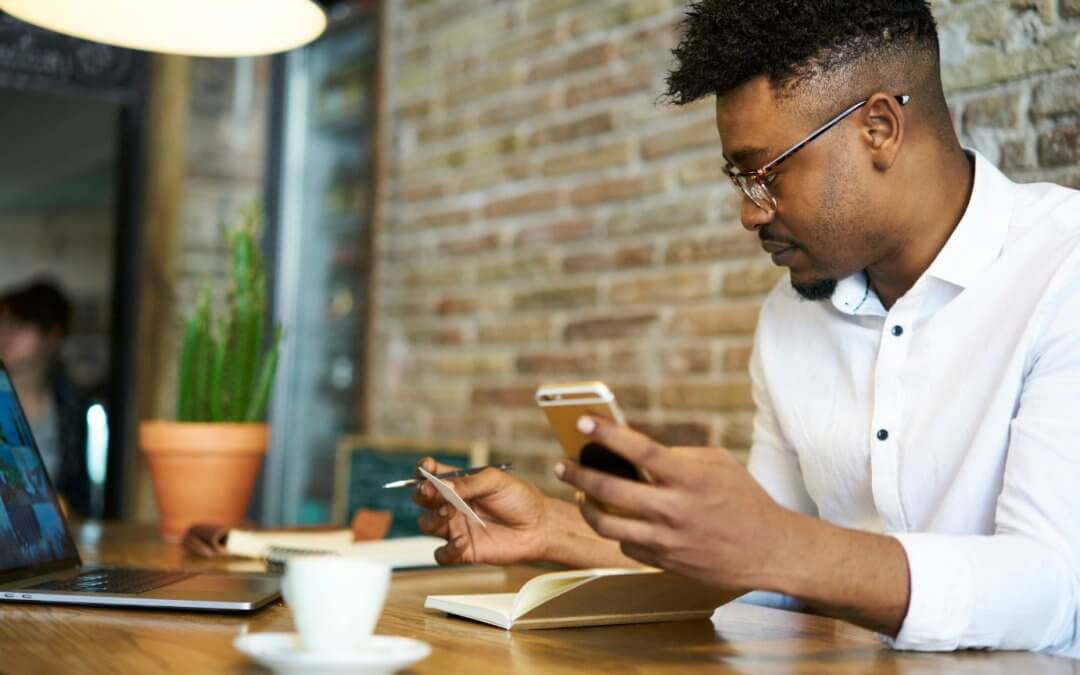We watch television shows and movies on our mobile phones. We check our emails. We post on social media. Many use their phones to check their bank accounts, make deposits or transfer money to friends. In fact, an estimated 115.6 million U.S. consumers used their phones to make a banking transaction in 2018 according to eMarketer. The report also cites a Morning Consult survey that shows about 81% of internet users will check their bank accounts online. Another 63% will pay bills and 45% will use their bank’s website or app to deposit checks.
Why do consumers love mobile banking?
Some consumers still love going into a branch and interacting with their local bankers. Nothing can replace great one-on-one customer service. But what about those days when you are delayed at work and you can’t get to your bank to deposit a check? Or you are on vacation and you need to check your account balance? These are just two of the situations where customers can’t get to a branch but can rely on their mobile banking app. Let’s look at mobile banking features more closely.
The ease of personal banking
- As mentioned, mobile banking applications allow consumers to check their balances and transfer money between accounts with just one touch. You don’t have to wonder if you have enough money to cover your expenses.
- Many consumers use their banking apps to pay bills. This eliminates the need to write and mail out checks each month. You can do it in just a few minutes on your mobile phone.
- Did someone give you an old-fashioned check? You can still deposit it using your mobile phone by taking a picture of the check using your camera app.
- Link your phone to other payment applications to have total control over your money. For example, if you lost your debit or credit card, you can still access your banking information from your phone and report the card lost or stolen.
- If you still need to visit a branch or need an ATM, you can find the nearest location using your mobile phone.
- Sign up is easy. You can even register to receive texts and alerts about your account.
- Consumers who prefer not to download the app can still bank from their mobile phone by going to the bank’s website.
Benefits of small business banking
Small business owners are busy and enjoy the services available to those with personal bank accounts. The ability to pay bills, pay vendors and check transactions on their phone is a time-saver. Business owners can take care of their finances wherever they are — whether they are on vacation in a remote location or out-to-dinner across town. You don’t have to wonder whether vendors and employees have been paid.
Mobile banking is safe and secure
Reports of cybersecurity breaches may scare some consumers into thinking mobile banking is not safe. But banks are investing millions into cybersecurity technology and experts to deploy and maintain it. Some of the ways banks are keeping your information safe include:
- Secure registration
- Personal data encryption
- Apps that identify your phone when making a transaction
Cybercriminals are smart, but consumers can protect their bank accounts by always doing the following:
- Create a unique, secure password. You should use something you are not using somewhere else. If you have trouble remembering, consider using an app like LastPass or 1Password that will store your passwords so you can refer to them at any time — even on mobile.
- Change your passwords frequently for online financial accounts.
- Make sure your WIFI connection is private and secure. Making sensitive transactions on public WIFI could expose your information to others.
- Follow basic cybersecurity rules. Don’t answer suspicious or unknown emails. An email from someone asking for your bank account so you can claim a prize or lottery winnings is almost always bogus.
Have other questions about mobile banking? Consumers can speak directly with their banker about how using mobile apps can help them have even more control over their financial freedom.

